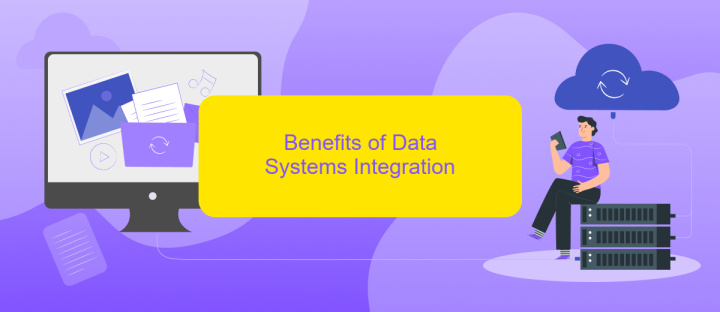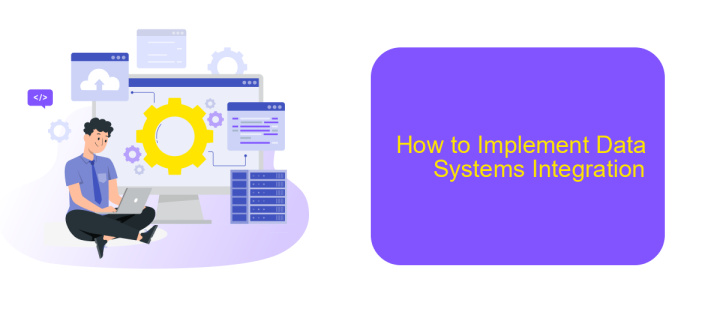Data Systems Integration Group
Data Systems Integration Group (DSIG) specializes in providing cutting-edge solutions for seamless integration of data systems across various industries. With a focus on innovation and efficiency, DSIG helps businesses streamline their data processes, ensuring real-time access and improved decision-making capabilities. Our expert team leverages advanced technologies to create customized solutions that meet the unique needs of each client, driving growth and operational excellence.
Introduction
Data Systems Integration Group is dedicated to streamlining the process of integrating various data systems. In today's fast-paced digital landscape, businesses need efficient and reliable solutions to manage the influx of data from multiple sources. This is where data system integration becomes crucial, enabling seamless communication and data flow between disparate systems.
- Enhanced data accuracy and consistency
- Improved operational efficiency
- Reduced manual data entry and errors
- Real-time data access and analysis
- Cost savings through automation
One notable service that facilitates data system integration is ApiX-Drive. This platform offers user-friendly tools to connect various applications and automate workflows without the need for coding. By leveraging ApiX-Drive, businesses can achieve smoother integration processes, ensuring that their data systems work in harmony and contribute to more informed decision-making. Whether it's connecting CRM systems, marketing platforms, or financial software, ApiX-Drive simplifies the integration process, making it accessible to organizations of all sizes.
Challenges in Data Systems Integration

Integrating data systems poses several challenges that organizations must navigate to ensure seamless data flow. One of the primary issues is data compatibility, where different systems may use varying formats and standards, leading to difficulties in data synchronization. Additionally, data security is a significant concern, as integrating multiple systems can create vulnerabilities that malicious actors might exploit. Ensuring that all integrated systems comply with relevant data protection regulations further complicates the process.
Another challenge is the complexity of managing and maintaining multiple integrations. Manual integration processes are often time-consuming and error-prone, making automation tools essential. Services like ApiX-Drive can simplify this by providing automated solutions for data integration, reducing the need for extensive manual intervention. ApiX-Drive helps streamline the process, allowing for real-time data synchronization and minimizing the risk of errors. This not only saves time but also enhances the reliability and efficiency of data systems integration.
Benefits of Data Systems Integration

Integrating data systems offers numerous advantages for businesses, enhancing operational efficiency and providing a competitive edge. By unifying disparate data sources, organizations can streamline workflows, reduce redundancy, and improve decision-making processes.
- Enhanced Data Accuracy: Integration ensures that data from various sources is consistent and up-to-date, reducing errors and discrepancies.
- Improved Efficiency: Automated data transfer between systems eliminates manual data entry, saving time and reducing the risk of human error.
- Better Decision-Making: Access to comprehensive, real-time data enables more informed and timely business decisions.
- Cost Savings: Reducing the need for multiple data management systems and manual processes can significantly lower operational costs.
- Scalability: Integrated systems can easily adapt to growing data volumes and evolving business needs.
Services like ApiX-Drive facilitate seamless data integration by providing user-friendly tools that connect various applications and automate data workflows. This not only simplifies the integration process but also ensures that businesses can maintain high data quality and operational efficiency without needing extensive technical expertise.
How to Implement Data Systems Integration

Implementing data systems integration requires a strategic approach to ensure seamless communication between disparate systems. The first step involves identifying the systems that need to be integrated and understanding their data formats, protocols, and APIs. This foundational understanding will guide the selection of appropriate tools and methods for integration.
Once the systems are identified, the next step is to choose an integration platform. ApiX-Drive is a versatile tool that simplifies the integration process by providing pre-built connectors for various applications. It allows users to automate data transfers without needing extensive coding knowledge.
- Identify and analyze the systems to be integrated
- Select an integration platform like ApiX-Drive
- Configure data mappings and transformations
- Test the integration thoroughly
After setting up the integration, continuous monitoring and maintenance are crucial to ensure data consistency and address any issues that arise. Regular updates and adjustments may be necessary to adapt to changes in the integrated systems or business requirements. By following these steps, organizations can achieve efficient and reliable data systems integration.
Conclusion
In conclusion, the integration of data systems plays a crucial role in streamlining business processes and enhancing operational efficiency. By consolidating disparate data sources into a unified system, organizations can achieve more accurate data analysis, improve decision-making, and foster innovation. The ability to seamlessly integrate various data systems ensures that businesses remain agile and responsive to market changes, ultimately driving growth and competitive advantage.
One of the key tools that facilitate this integration is ApiX-Drive. This service offers a user-friendly interface and robust functionality to connect different applications and automate workflows without requiring extensive technical expertise. By leveraging ApiX-Drive, businesses can simplify the process of integrating their data systems, thereby saving time and reducing the risk of errors. As a result, organizations can focus on their core activities while ensuring that their data systems are efficiently managed and aligned with their strategic objectives.
FAQ
What is Data Systems Integration?
Why is Data Systems Integration important for businesses?
What are the common challenges in Data Systems Integration?
How can automation help in Data Systems Integration?
What should businesses consider when choosing a Data Systems Integration solution?
Time is the most valuable resource in today's business realities. By eliminating the routine from work processes, you will get more opportunities to implement the most daring plans and ideas. Choose – you can continue to waste time, money and nerves on inefficient solutions, or you can use ApiX-Drive, automating work processes and achieving results with minimal investment of money, effort and human resources.

